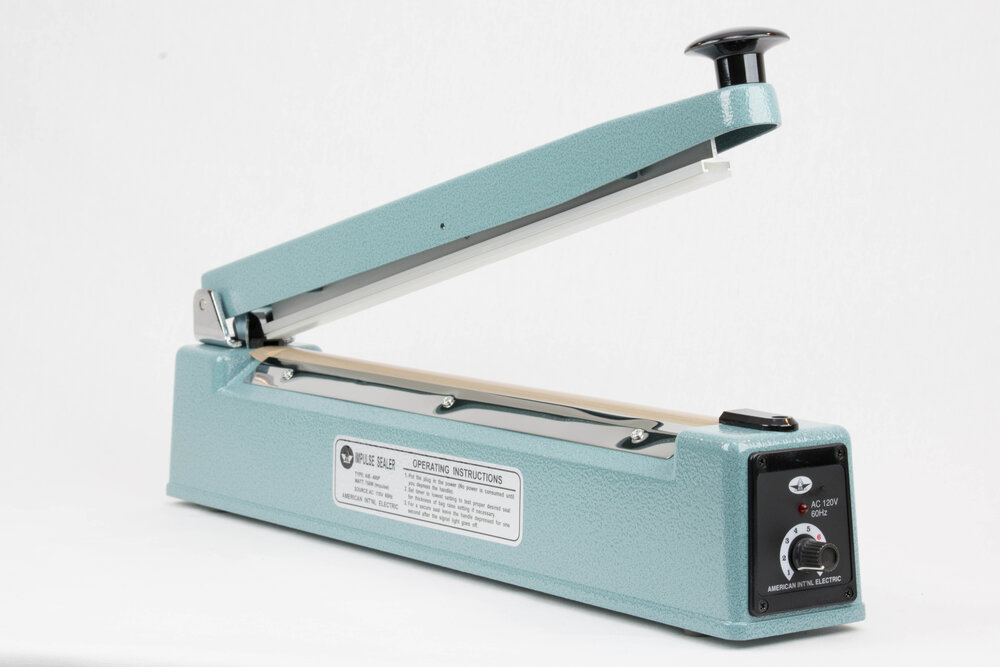Impulse-Sealing Plastic Pneumatic Actuators¶
Please note: this page is a work in progress.
We will use low-pressure pneumatic actuation for a number of experiments and projects in the course. The fastest way to make a simple pouch actuator is to use an impulse sealer to weld together polyethylene sheets.
Summary¶
The impulse sealer creates an airtight mechanical bond between two sheets of plastic using a combination of heat and pressure.
A good weld depends on several conditions:
fixturing two layers of plastic smoothly in close contact but without excessive tension
adjusting the weld timing to cleanly join without creating a gap or cutting through
designing the weld pattern for airtight reliability and even heat distribution
Useful Tools¶
Impulse sealer
Scissors
Pen, pencil, sharpie
Double stick tape
Scotch tape or clear packing tape or duct tape
Straw or tube for blowing air
Cardboard (can be from boxes)
Useful, but not required: x-acto knife or box cutter

Our large portable impulse sealer is an AEI 400P with a 16 inch seal length.¶
Materials¶
Plastic film for heat-sealing:
Flexible LDPE Film, 3x100’, 0.004” thick, semi-clear white, https://www.mcmaster.com/8553K101/
Open-Top Bags on a Roll, 4 Mil Thick, 750 Feet Long, 6” Wide, https://www.mcmaster.com/2062T806/
Templates¶
Our introductory template demonstrating simple pouch and contraction actuator designs may be found here:
References¶
The work on this page and the specific design examples were motivated by the following:
Aeromorph (see the multiple tabs under “Aeromorph Collection”)
Sticky Actuator (see the tabs under “Sticky Actuator Collection”)
Origami Inspired Muscles (incorporated stiffening structures)
Laser-cut examples (complex patterns)
Soft Robotics Toolkit (related soft actuators)
aeroMorph - Heat-sealing Inflatable Shape-change Materials for Interaction Design [R8] (2016).